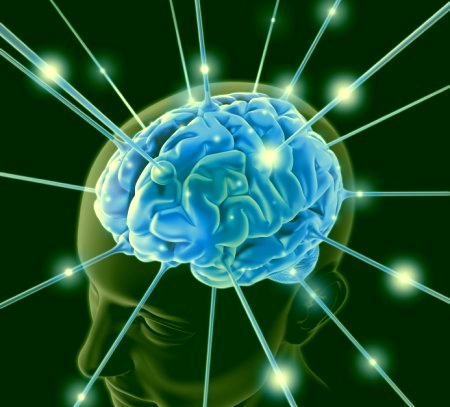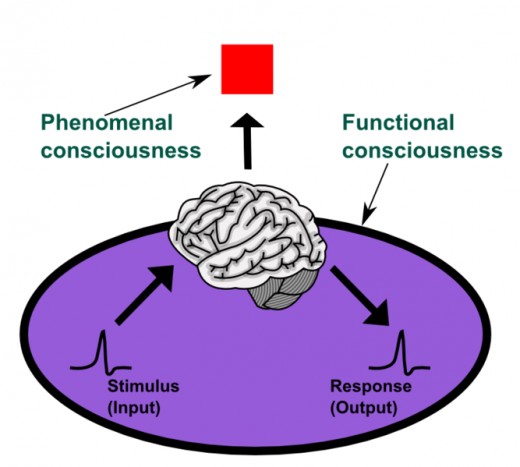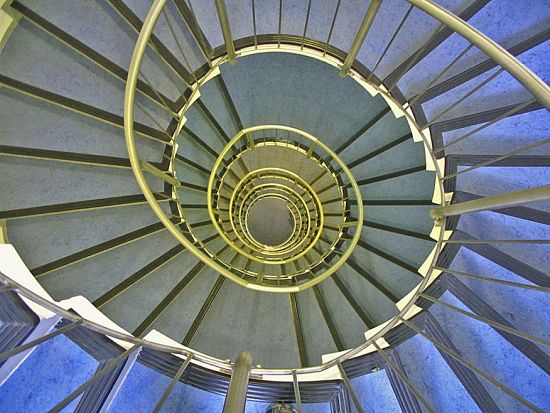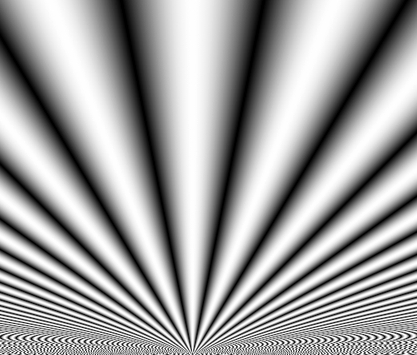Self Awareness, Consciousness, The Within of Things - Are Animals Conscious
Our 'Selves'
The boundary between you and me - yourself and myself - and the surrounding world is normally taken to be the skin. The outer layer
of our bodies defines who we think we are from a psychological and philosophical point on view.
The question of whether animals have self-awareness similar to us, and consciousness has been debated for centuries. it is a hard question to answer. Various research would suggest that animals are self-aware. Experiments published in Science, 212, 695 (1981) showed that pigeons can be taught to use a mirror to find a spot on their body which they couldn't see except when looking in the mirror. Similar behaviour has been reported in primates and other animals which is attributed to a concept of self. However it is generally thought that there are degrees of self-awareness.
This idea brings to mind old concepts, of there being a
'Within of things', and that there is a critical threshold of self-awareness that is required before an animal can be said to be conscious, in the way that humans are conscious and self-aware. If you watch a dog that is dreaming when asleep, it is hard not to believe that the dog is conscious and is dreaming about being attacked or chasing something. The dog will move its legs in the chase and bark and have facial expressions that certainly appears to be a conscious dream. This goes well-beyond rapid-eye movement sleep and random muscle twitches as the behaviour is too coordinated.
Consciousness




Self Awareness
While a biology professor can explain a lot about how cells work, and a vet about how dogs and cats operate. and a doctor about how humans function and their bodies work - there is more to life than this. All living things (even the plants and bacteria) have an ability to sense their surroundings and have an ability to coordinate what they sense and experience as feed-back to separate their 'selves' from their non-self surroundings. Dieticians tell us 'we are what we eat' but philosophers tell us 'we are what we feel and understand our selves to be'.
The physics experts tell us that nothing happens unless we observe that it happens. Experiments confirm that various particles only exist and have real properties if they are observed and we see or measure these properties. Until our minds take the observations and conceive what it means, the things we are observing and their properties have no real existence. As the famous physicist John Wheeler once said, "No phenomenon is a real phenomenon until it is an observed phenomenon."
We can only perceive what is around us with our senses. Is what we see the real deal, the full reality of what's out there? Yes, but only in the sense that its what our eyes tell us is out there as an image, that we process with out consciousness, intelligence and experience. You only have to think about optical illusions to realise that what we see is only a 'view' or interpretation of nature - of what is out there. If ours eyes were different would reality be different - no because 'reality' is only what we sense and interpret about reality. There is no 'absolute' reality divorced from the senses because that is the only reality we know and can ever know.
Yours Eyes can Play Tricks - What's Real?

Are Animals Aware of Self?
Mankind has for a long time separated the mechanics of nature from the thoughts and consciousness in the brain. We are taught or believe that the universe can be fundamentally divided into two entities -- our 'selves', and that which is external beyond ourselves, outside - our surroundings. This seems logical but it is misinterpreted in a mechanical sense. The concept of 'Self' is often defined by what we can control inside the outer barrier of our bodies - the skin. We can move our fingers but we cannot move the table without touching it with our skin and using our muscles to move it. But as we have discussed everything you see and experience - your body, your fingers, the computer you are using, the trees and sky are part of an active process created and occurring in your mind and processed by you brain and your consciousness. Your self, your consciousness, your experience are part of this process, and are a real part, just as the physical objects are part of the universe. We should regard ourselves as unified beings and the animals around us as unified beings - not objects but as things integrated with consciousness. Your Self is Your Consciousness and part of the deal and just as real. The animals around us are 'themselves' with their 'consciousness' or at least their form of consciousness are part of the deal and just as real as their physical bodies.
Getting back to self-awareness and whether, and to what extent, various organisms are aware of them 'selves'. Interesting observations with mirrors show some of the differences. A bird will react to an image and may peck at it. The bird may not be aware that it is seeing itself, its own image, but it is reacting as if it was seeing another bird, which it does all the time in its natural habitat. But pigeons can be taught to use a mirror to find a spot on their body which they couldn't see except when looking in the mirror.
If you put a red spot on top of the forehead of a cat or dog before adding the mirror, the animal will paw or scratch at the mirror where the spot appears to be. The chimpanzee, on the other hand, will reach up its own body and touch its forehead, watching in the mirror as it does so. This is evidence that the chimp can form a 'concept' of its own self using its experience and intelligence that more primitive forms of vertebrates cannot do to the same extent.
Various scientists have discussed the evolution of consciousness. Researchers discuss a primitive form of 'overall sensation' as a feature of even the simplest nerve networks in animals. They argue that these primitive features of neural networks were used during evolutionary to develop to learning and motivation, and became functional properties of 'basic consciousness'. They propose that this development first occurred in invertebrates during the early Cambrian. There is stronger evidence for consciousness in the form of primitive emotions in birds than in the invertebrate cephalopods.
Its all come full-circle really. Pierre Teilhard De Chardin (1881-1955), the Jesuit Priest, and controversial Theologian and Palentologist, coined the phrase 'the Within of things'. For Teilhard the 'Within' is used to "denote the psychic fact of that" part of "the stuff of the cosmos enclosed from the beginning of time within the narrow scope of the early earth." The exterior physical world contained an interior element - a "certain mass of elementary consciousness was originally imprisoned in the matter of the earth." In the basic cell, Teilhard argued that "we have...the stuff of the universe reappearing once again with all its characteristics...only this time it has reached a higher rung of complexity," that has progressed "still further in interiority, i.e. in consciousness." Teilhard called the vast mass of living creatures the 'biosphere'. This biosphere, an advancing and evolving network of life, culminated in the development of man. With the advent of man, Teilhard believed that with the advent of humans, cosmic evolution finally become conscious of itself. Teilhard believed that the fate of mankind was to culminate in the full consciousness of the most advanced species.
Conclusion: This is an interesting concept where the debate has done a full circle by returning to old concepts where consciousness and self awareness are seen as integral and obligate parts of all living things. It relates to the senses and perception of surroundings, not just to the physical world. As the famous physicist John Wheeler, once said, "No phenomenon is a real phenomenon until it is an observed phenomenon." Self awareness and consciousness should be therefore be regarded and a fundamental part of all living things which has culminated in human consciousness and awareness of self. We are our 'selves' and what we perceive our surroundings to be, using our experiences and intelligence. Our fellow creatures on Earth are them 'selves' and what they perceive themselves to be. The 'Within' of things is an integral part of the Universe.